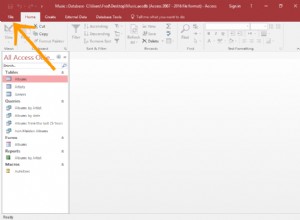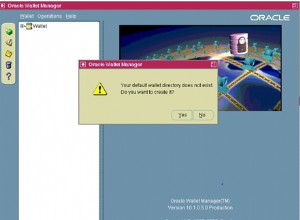Utilizzando una query per ogni tipo di ricorsione, uniti insieme.
Le ricorsioni settimanali e mensili utilizzano un paio di query incrociate per generare un intervallo di numeri da aggiungere alla data. Questo può far fronte a un massimo di 1000 appuntamenti ripetuti, ma è facilmente espandibile a più (se gli appuntamenti vogliono essere ripetuti per più di ~20 anni).
SELECT a.appoinemnt_id, a.user_id, a.recur_type, a.date AS appoint_date
FROM tbl_appointment a
WHERE a.recur_type = 0
HAVING appoint_date BETWEEN '2014-07-01' AND '2014-07-31'
UNION
SELECT a.appoinemnt_id, a.user_id, a.recur_type, DATE_ADD(a.date, INTERVAL units.i + tens.i * 10 WEEK) AS appoint_date
FROM tbl_appointment a
CROSS JOIN (SELECT 0 i UNION SELECT 1 UNION SELECT 2 UNION SELECT 3 UNION SELECT 4 UNION SELECT 5 UNION SELECT 6 UNION SELECT 7 UNION SELECT 8 UNION SELECT 9)units
CROSS JOIN (SELECT 0 i UNION SELECT 1 UNION SELECT 2 UNION SELECT 3 UNION SELECT 4 UNION SELECT 5 UNION SELECT 6 UNION SELECT 7 UNION SELECT 8 UNION SELECT 9)tens
WHERE a.recur_type = 1
HAVING appoint_date BETWEEN '2014-07-01' AND '2014-07-31'
UNION
SELECT a.appoinemnt_id, a.user_id, a.recur_type, DATE_ADD(a.date, INTERVAL units.i + tens.i * 10 MONTH) AS appoint_date
FROM tbl_appointment a
CROSS JOIN (SELECT 0 i UNION SELECT 1 UNION SELECT 2 UNION SELECT 3 UNION SELECT 4 UNION SELECT 5 UNION SELECT 6 UNION SELECT 7 UNION SELECT 8 UNION SELECT 9)units
CROSS JOIN (SELECT 0 i UNION SELECT 1 UNION SELECT 2 UNION SELECT 3 UNION SELECT 4 UNION SELECT 5 UNION SELECT 6 UNION SELECT 7 UNION SELECT 8 UNION SELECT 9)tens
WHERE a.recur_type = 2
HAVING appoint_date BETWEEN '2014-07-01' AND '2014-07-31'
Fiddle SQL per questo qui:-
http://www.sqlfiddle.com/#!2/6346a2/2




